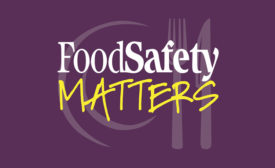Process Control
Biocidal chemicals and other physical/chemical techniques may be used together, in a strategic manner, to achieve an overall improvement in plant hygiene
Read More
Never miss the latest news and trends driving the food safety industry
eNewsletter | Website | eMagazine
JOIN TODAY!Copyright ©2025. All Rights Reserved BNP Media.
Design, CMS, Hosting & Web Development :: ePublishing












